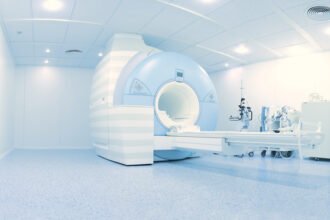How can hepatologists use ultrasound more effectively in the diagnosis and follow-up of chronic liver disease to increase patient satisfaction and improve the operating expenses for the service line manager?
How can hepatologists use ultrasound more effectively in the diagnosis and follow-up of chronic liver disease to increase patient satisfaction and improve the operating expenses for the service line manager?
 Whether they’re dealing with Hepatitis A, B, and C, Non-Alcoholic Fatty Liver Disease (NAFLD), Non-Alcoholic Steatohepatitis (NASH), cystic fibrosis, cirrhosis, or liver cancer, hepatologists need accurate and reliable data when it comes to the evaluation of liver disease. Millions of people worldwide suffer from some form of chronic liver disease, and with risk factors such as obesity on the rise, liver disease diagnoses are projected to increase significantly in the coming years. The roll-out of the Affordable Care Act puts reimbursement under pressure, and the medical community increasingly needs the most cost-effective diagnostic solutions.
Whether they’re dealing with Hepatitis A, B, and C, Non-Alcoholic Fatty Liver Disease (NAFLD), Non-Alcoholic Steatohepatitis (NASH), cystic fibrosis, cirrhosis, or liver cancer, hepatologists need accurate and reliable data when it comes to the evaluation of liver disease. Millions of people worldwide suffer from some form of chronic liver disease, and with risk factors such as obesity on the rise, liver disease diagnoses are projected to increase significantly in the coming years. The roll-out of the Affordable Care Act puts reimbursement under pressure, and the medical community increasingly needs the most cost-effective diagnostic solutions.
The gold standard for diagnosing and monitoring the progression of liver fibrosis is a liver biopsy. However, biopsies can under or overestimate fibrosis stage in up to 33% of cases*, and don’t always provide an accurate representation of the distribution of fibrosis throughout the liver. They can also result in further serious complications.
Because liver disease, particularly liver fibrosis, is associated with increased stiffness of liver tissue, more solutions are relying on anatomic and stiffness information for the diagnosis and assessment of liver fibrosis. In both current and future healthcare environments, solutions that provide comprehensive information at a low cost show the most promise. However, the majority of techniques that evaluate fibrosis or tissue stiffness require expensive, cumbersome accessories or a completely separate system whose only function is to provide tissue stiffness information.
In recent years, the ability to quantitatively and qualitatively analyze tissue stiffness has been incorporated into fully-functional diagnostic ultrasound scanners using shear wave elastography. Shear wave elastography uses ultrasonic waves to detect extremely small changes in tissue displacement, resulting in highly sensitive and reliable diagnostic images. Of the non-invasive imaging methods to diagnose fibrosis from chronic liver disease, ultrasound may be the most accurate and cost-effective option. So how can hepatologists leverage this low cost modality to improve outcomes for their patients without increasing their expenses?
With shear wave elastography, the mechanical properties of liver tissue can be easily evaluated during an existing ultrasound imaging exam, eliminating the need for additional patient setup or unique equipment. Physicians are able to see a visual representation of the liver’s state, and are also provided with a reproducible measurement of tissue stiffness throughout the liver. Ultrasound is a low-cost, non-ionizing modality that can be integrated into clinical routines, and elastography imaging adds only a few minutes to a regular ultrasound exam. Because it is easily accessible for follow-up, adopting ultrasound elastography could lead to fewer biopsies for patients on long-term monitoring of fibrosis progression.
While ultrasound shear wave elastography has been widely adopted in Europe and Asia as a new dimension in the diagnosis of liver disease, it hasn’t yet been adopted as routine clinical practice in the United States. But with the increasing focus on operational expenses and patient satisfaction, I wonder if this might be a real advantage to healthcare practitioners.
What will it take for ultrasound to become the preferred imaging modality for of the diagnosis and follow-up of chronic liver disease? Share your thoughts!
*Regev A, Berho M, Jeffers LJ, Milikowski C, Molina EG, Pyrsopoulos NT, Feng Z, Reddy KR, Schiff ER. Sampling Error and Intraobserver Variation in Liver Biopsy in Patients With Chronic HCV Infection. American Journal of Gastroenterology. 2002; 97 (10) 2614-2618.
image: shutterstock










